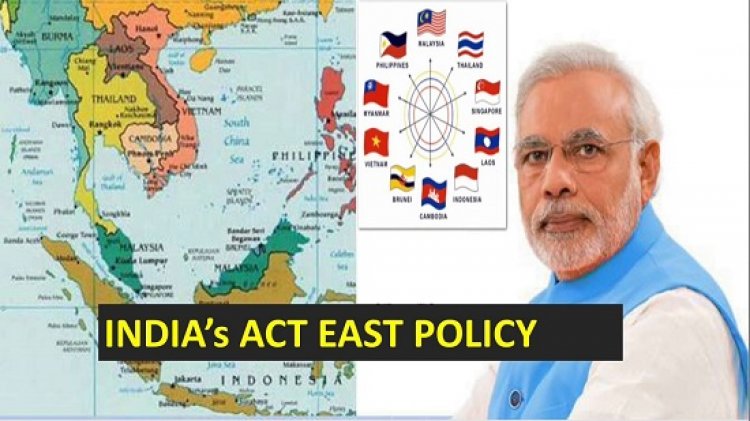Act East Policy: Serious Challenges
STORIES, ANALYSES, EXPERT VIEWS

India’s ‘Look East’ policy was developed during the government of Prime Minister Narasimha Rao (1991–1996) and pursued by the successive administrations of Atal Bihari Vajpayee (1998–2004) and Manmohan Singh (2004–2014). It was an effort to cultivate extensive economic and strategic relations with the nations of Southeast Asia to bolster its standing as a regional power and a counterweight to the strategic influence of China. Initiated in 1991, it marked a strategic shift in India’s perspective of the world.
The success of the policy enthused the government to develop the policy into more action oriented, project and outcome based policy. In 2014, Prime Minister Modi announced the ‘Act-East’ policy, as a successor to the ‘Look-East’ policy. The policy was meant to be more pro-active. However, three developments over the past five years are testing Indian diplomacy in the region, writes Sanjaya Baru (policy analyst and writer. “First, the rising profile of China combined with growing China-India tensions; second, disappointment in the region with India’s economic under-performance; and, third, rising concern in the region with India’s approach towards its minorities, especially Muslims and Christians.
The rising China factor
“China’s accelerated rise since the trans-Atlantic financial crisis and the growing assertiveness of the Xi Jinping regime initially generated a strong pro-India sentiment in the region with many ASEAN countries wanting India to balance China’s enhanced power. However, India’s economic slowdown and inward orientation, expressed through the decision to stay out of the Regional Comprehensive Economic Partnership (RCEP) agreement, disappointed regional business. While ASEAN and Indian governments tried to maintain good relations, Southeast Asia’s powerful business groups, mostly ethnic Chinese, began losing interest in India.”
Still, “during the Doklam stand-off between China and India, many ASEAN governments conveyed their quiet support for India in the hope that a robust response from India would keep China’s geopolitical ambitions in the region under check. It would seem that between Doklam and Galwan there has been a change in the Southeast Asian assessment of China and India. How much of this is due to a willingness to accommodate Chinese interests among the region’s elites or due to a growing admiration for China’s assertion of power within the ethnic Chinese community in the region or due to a disappointment with India, is moot.
Trends in civil society and domestic politics shape India’s image
“If ethnic Chinese loyalties define one segment of Southeast Asian civil society, Islamic faith defines another large segment. Growing concern about Hindu majoritarianism in India has impacted civil society attitudes in countries like Indonesia, Malaysia, Thailand and Singapore. India deployed the soft power of ‘Buddhist diplomacy’ but that too has not gained much traction as inter-religious tensions in the region grow. In most ASEAN countries, ethnic Chinese practise Islam, Buddhism or Christianity. The growing assertion of a Hindu personality by India’s present ruling dispensation has weakened India’s soft power, globally and in this region.”
Taken together, Baru concludes “all these developments weakened the business-to-business (B2B) and people-to-people (P2P) connect between India and ASEAN despite the best efforts of hard-pressed diplomats to maintain good government-to-government (G2G) relations. While a lot of foreign policy analysis focuses on G2G relations and official policy statements, and a lot of this can be cited to claim that all is well with India-ASEAN relations, few are paying attention to how trends in civil society and domestic politics are being shaped. The bottom line is that despite the best intentions of an Act East Policy, India’s standing and image in Southeast Asia have suffered.”
Baru suggests Indian diplomacy must take a fresh look at its Act East policy and the constraints being imposed on it by unsatisfactory economic performance and sectarian and communal politics at home.
















